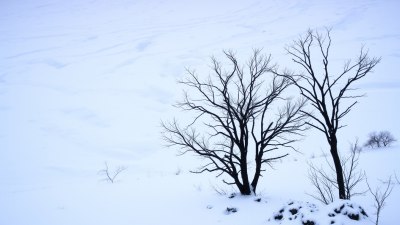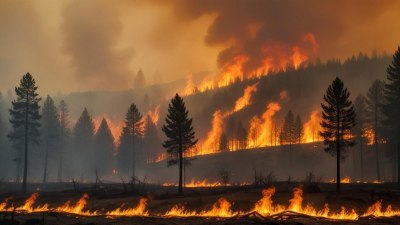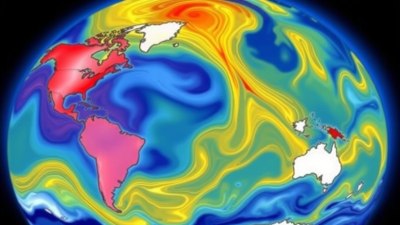How to Spot Signs of Approaching Weather Without a Forecast
Learn practical tips and natural indicators to predict weather changes without relying on forecasts, enhancing your outdoor safety and preparedness.

Predicting weather changes without modern forecasts can be a valuable skill, especially for outdoor enthusiasts, travelers, and those who live in remote areas. By observing natural signs and understanding atmospheric cues, you can gain insights into approaching weather conditions and prepare accordingly. This guide explores reliable methods and indicators to help you spot signs of changing weather without needing a formal weather report.
Understanding Weather Basics
Weather is the result of complex interactions between atmospheric pressure, temperature, humidity, and wind patterns. Drops or rises in atmospheric pressure often signal that weather changes are on the horizon. Without instruments, you can still infer some of these shifts by carefully observing environmental factors. Recognizing these subtle clues can help you anticipate rain, storms, or fair conditions ahead of time.
Observing the Sky and Cloud Formations
Clouds are one of the most telling indicators of upcoming weather. Their shapes, sizes, and movements can provide useful information. For example, high, thin cirrus clouds may suggest that a warm front and moisture are moving into your area, possibly heralding rain within the next day or two. Conversely, thick, towering cumulonimbus clouds typically indicate storm development.
When you notice clouds rapidly thickening or darkening, this often precedes precipitation or thunderstorms. Pay attention to cloud direction and speed as well — fast-moving clouds traveling in a different direction than the wind at ground level may indicate unstable atmospheric layers.
Watching the Color of the Sky
Colors at sunrise and sunset can also reveal weather trends. A red sky at night often indicates high pressure and stable air coming in, suggesting good weather ahead. The phrase “Red sky at night, shepherd’s delight” reflects this traditional wisdom. Conversely, a red or fiery sky in the morning may mean that a low pressure system (and rain) is approaching, embodied in the saying “Red sky in the morning, shepherd’s warning.”
In addition, a greenish or gray tint to the sky can signify severe weather such as thunderstorms or even tornadoes, especially in combination with other signs.
Changes in Wind Patterns and Direction
Wind is another crucial marker. Sudden shifts in wind direction, particularly if winds begin to pick up in intensity, often correlate with weather changes. For instance, if the wind starts blowing from the south or southwest, this can bring warm, moist air that may trigger rain or storms.
Also, calm conditions that suddenly turn windy or breezy might indicate an oncoming weather front. Learning the prevailing wind patterns in your area helps you contextualize these changes more effectively.
Animal and Insect Behavior
Animals and insects are often highly sensitive to changes in barometric pressure and humidity. Many traditional weather predictions are based on their behavior. For example, birds flying low may be avoiding high winds or rain brewing aloft. Cows lying down in a field is sometimes linked to impending rain, as some believe they lie down to protect their hooves from moisture.
Insects such as ants or bees can also alter their activity prior to weather changes. An increase in buzzing or swarming behavior could indicate that a storm is approaching, as these creatures seek shelter or try to protect their hives.
Plant Indicators
Certain plants react to humidity and atmospheric pressure. Pine cones, for example, open when the air is dry and close in wet or rainy conditions. Observing the state of pine cones can thus provide clues about the moisture level in the air and potential precipitation.
Similarly, some flowers close their petals before rain to protect their reproductive parts. Lawn grass blades and leaves may also appear more shiny or sticky as humidity rises.
Sound Variations
Sound carries differently depending on weather conditions. Clear, crisp sounds generally indicate dry, stable air, while muffled or distant noises may mean that higher humidity or rain is approaching. Even the calls of animals can change; frogs might become louder in the evening before rain.
Using Natural Barometers
Without instruments, you can still gauge barometric pressure shifts indirectly. For example, if you have access to a sealed container with a flexible lid or a straw inserted into water, you might observe small changes as the air pressure shifts. These rudimentary barometers can hint at impending weather changes.
Smells in the Air
The scent of the environment can change before rain or storms. Many people report a distinctive, earthy smell often referred to as petrichor when rain is imminent, caused by oils released from soil-dwelling bacteria activated by moisture. Similarly, a sharper, ozone-like scent might precede thunderstorms.
Temperature Fluctuations
Sudden drops or rises in temperature can indicate an approaching weather front. For example, a quick temperature decrease may signal cold front movement, often accompanied by wind shifts and precipitation. Conversely, a rise in temperature paired with increased humidity can precede thunderstorms.
Moon and Star Visibility
A clear view of stars and the moon often means stable weather for the immediate future, as clouds tend to obscure celestial bodies. When the moon appears blurred or surrounded by a halo, moisture in the upper atmosphere is likely increasing, which could lead to precipitation.
Developing an Intuition
Over time, continuous observation helps build a reliable intuition about weather changes. Keeping a journal of your observations alongside actual weather outcomes can reinforce your understanding of local weather patterns and signs.
Combining Multiple Indicators
Relying on a single sign may occasionally lead to inaccurate predictions. Observing multiple indicators together — such as the sky’s color, cloud type, wind changes, and animal behavior — increases the accuracy of your weather forecasts. This holistic approach improves your chances of correctly anticipating weather shifts.
Practical Applications
Spotting weather signs is especially crucial when camping, hiking, boating, or farming. Being able to anticipate sudden storms or rain without a forecast enhances safety and helps you make informed decisions about shelter, travel, and resource management.
Although modern technology provides convenient weather forecasting, understanding how to read natural signs remains invaluable. By attentively observing the sky, wind, animals, plants, and atmospheric conditions, you can predict weather changes with surprising accuracy. Developing these skills not only enriches your connection to the environment but also ensures better preparedness when forecasts are unavailable.











